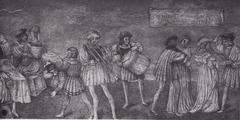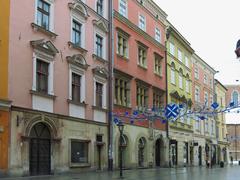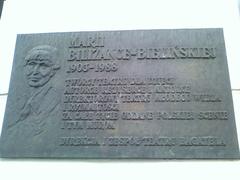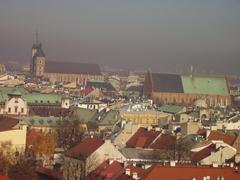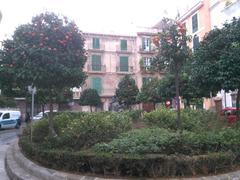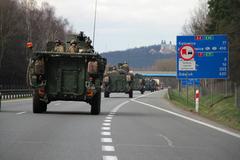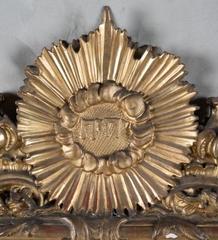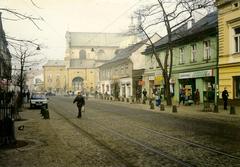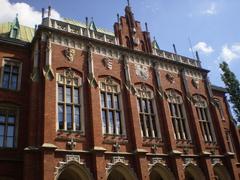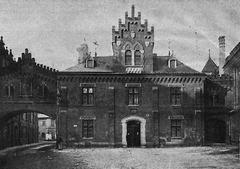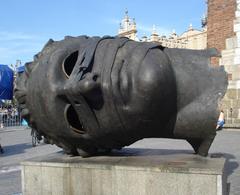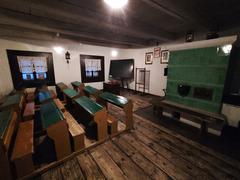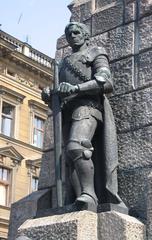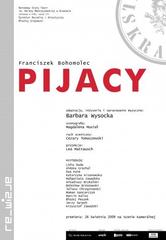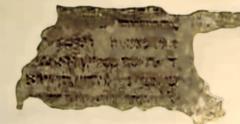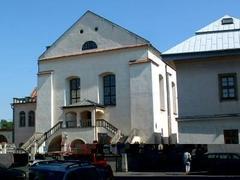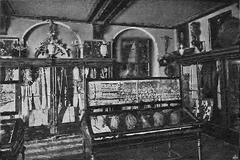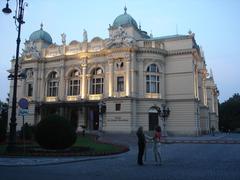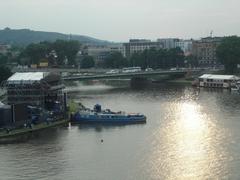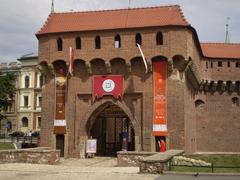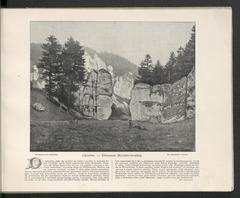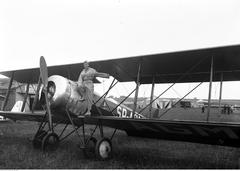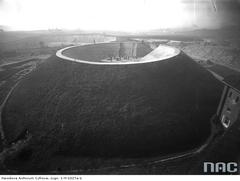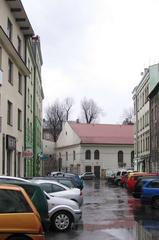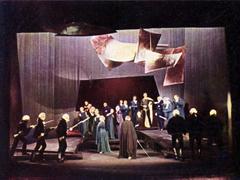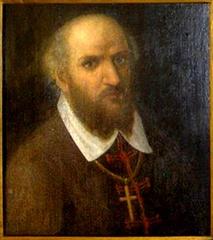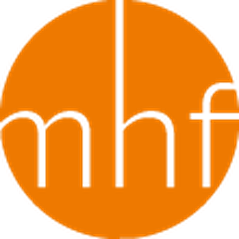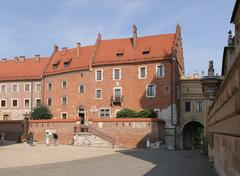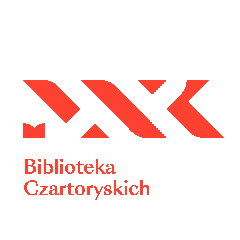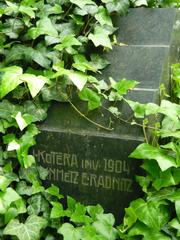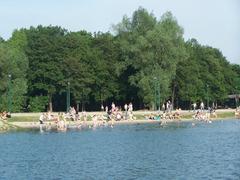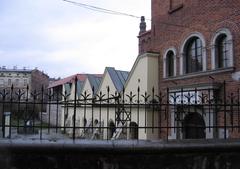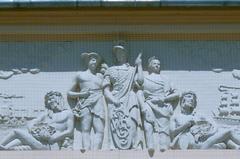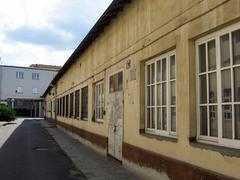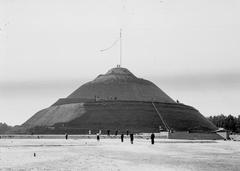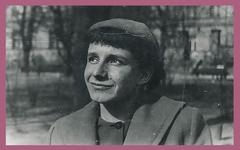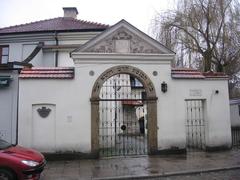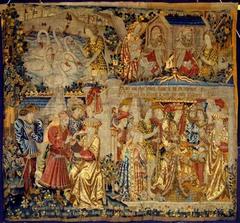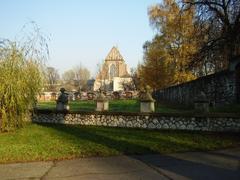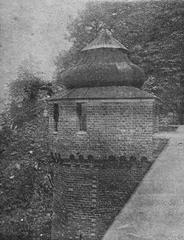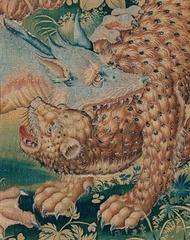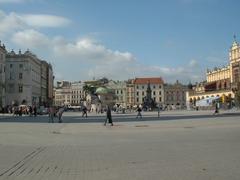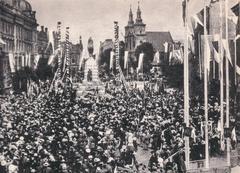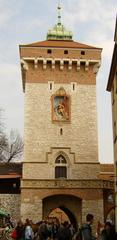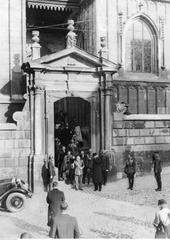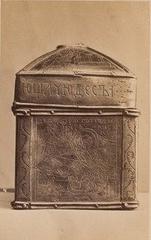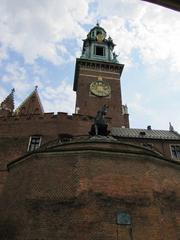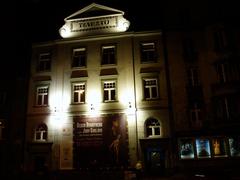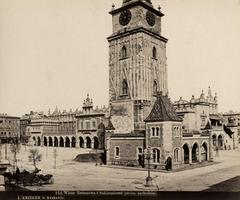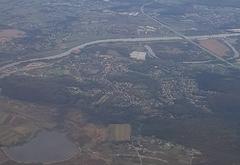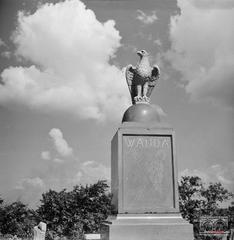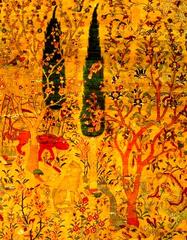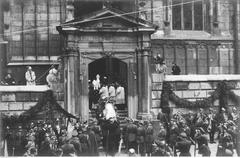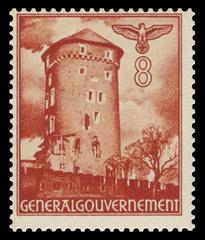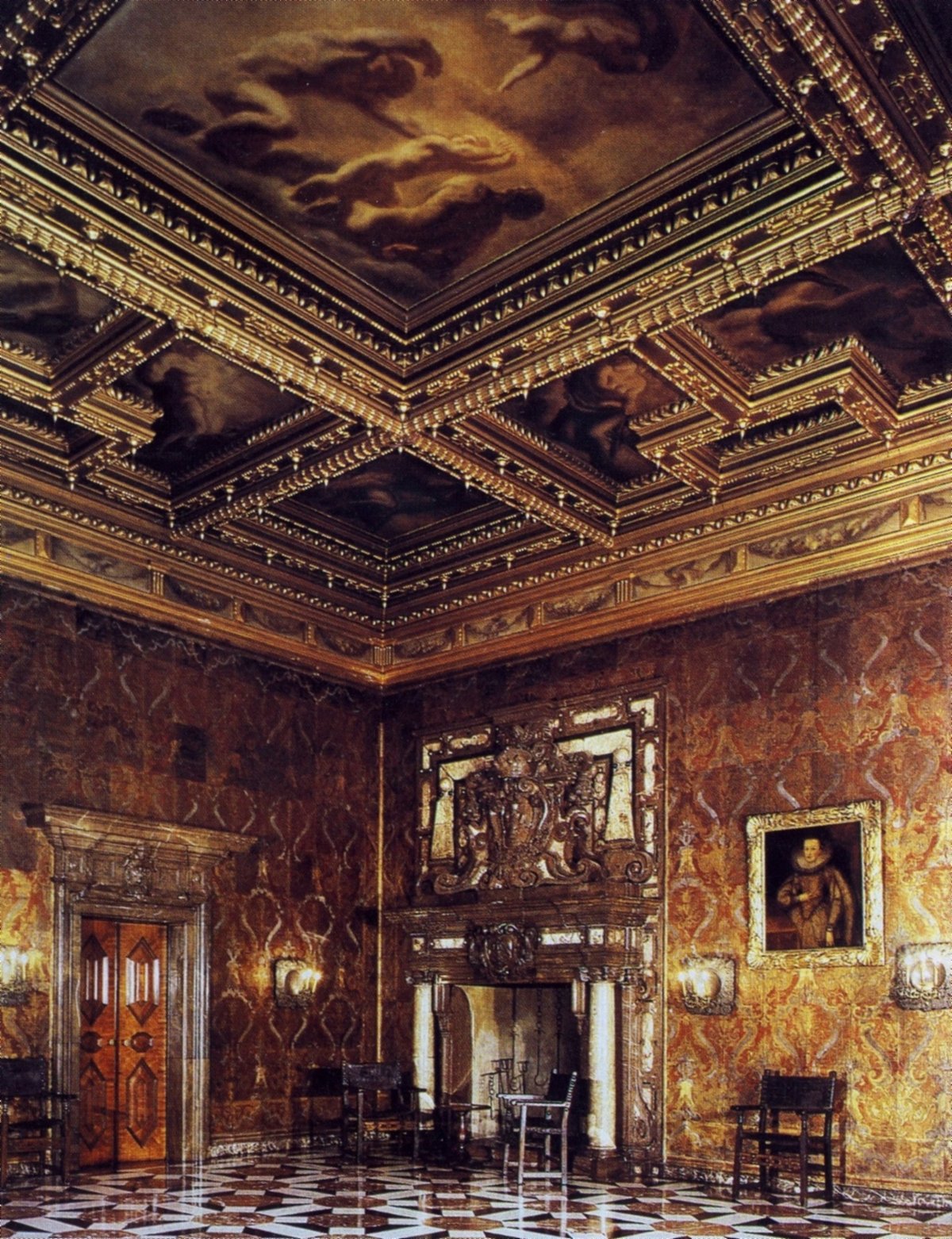
Visiting Hours, Tickets, and Historical Significance of Reprezentacyjne Komnaty Królewskie, Kraków
Date: 19/07/2024
Introduction
The Reprezentacyjne Komnaty Królewskie, known as the State Rooms of the Royal Castle, are an integral part of Wawel Royal Castle in Kraków, Poland. This iconic site is not only a symbol of Poland’s rich history but also a beacon of its cultural heritage. The Wawel Royal Castle, perched on Wawel Hill, has been a central figure in Polish political and cultural life since the early Middle Ages. Initially constructed in the 11th century under the reign of King Casimir I the Restorer, the castle has undergone numerous transformations, most notably during the Gothic and Renaissance periods under the guidance of King Casimir III the Great and King Sigismund I the Old (Wawel Castle History). The Reprezentacyjne Komnaty Królewskie, in particular, reached their pinnacle during the 16th century, a period often referred to as the Golden Age of the Wawel Royal Castle. The State Rooms were adorned with exquisite tapestries, paintings, and furniture, reflecting the wealth and power of the Polish-Lithuanian Commonwealth (Polish Renaissance). Despite adversities faced during the Swedish invasions and subsequent wars, efforts in the 19th and 20th centuries have meticulously restored the castle to its former glory, transforming it into a museum that showcases Poland’s resilience and dedication to preserving its cultural heritage (Wawel Restoration). Today, the Reprezentacyjne Komnaty Królewskie stand as a testament to the artistic, cultural, and historical achievements of Poland, offering visitors a unique glimpse into a bygone era of splendor and sophistication (Wawel Museum).
Table of Contents
- Introduction
- Origins and Early History
- Gothic and Renaissance Transformations
- The Golden Age
- Decline and Restoration
- World War II and Post-War Period
- Architectural and Artistic Significance
- Cultural and Historical Impact
- Visitor Information
- Travel Tips and Nearby Attractions
- Accessibility
- Preservation and Modern-Day Relevance
- Conclusion
- FAQs
Origins and Early History
The Reprezentacyjne Komnaty Królewskie are located within the Wawel Royal Castle in Kraków, Poland. The castle itself dates back to the 11th century, originally constructed under the reign of King Casimir I the Restorer. Wawel Hill has been a significant site since the early Middle Ages, serving as a political and cultural center for the Polish state.
Gothic and Renaissance Transformations
The castle underwent significant transformations during the reign of King Casimir III the Great in the 14th century, including the addition of defensive walls and towers in the Gothic style. The most notable changes occurred during the Renaissance period under the rule of King Sigismund I the Old and his wife, Queen Bona Sforza. They commissioned Italian architects, including Bartolommeo Berrecci, to redesign the castle in the Renaissance style, resulting in the magnificent arcaded courtyard and richly decorated interiors of the State Rooms (Wawel Castle History).
The Golden Age
The 16th century marked the Golden Age of the Wawel Royal Castle. The State Rooms were adorned with exquisite tapestries, paintings, and furniture, reflecting the wealth and power of the Polish-Lithuanian Commonwealth. The castle became a hub of artistic and intellectual activity, attracting artists, scholars, and diplomats from across Europe. The Jagiellonian dynasty, particularly King Sigismund II Augustus, played a crucial role in enhancing the castle’s splendor by commissioning numerous works of art and expanding the royal collections (Polish Renaissance).
Decline and Restoration
The decline of the Wawel Royal Castle began in the 17th century due to a series of wars and political upheavals. The Swedish invasions, known as the Deluge, and subsequent wars with Russia and the Ottoman Empire led to significant damage. By the 18th century, the castle had fallen into disrepair, and its treasures were dispersed or lost. Restoration efforts began in the 19th century, driven by a growing sense of national identity and pride among Poles. Comprehensive restoration was undertaken in the early 20th century by the Polish government and various cultural and historical organizations (Wawel Restoration).
World War II and Post-War Period
During World War II, the Wawel Royal Castle was occupied by the Nazis and used as the residence of Hans Frank, the Governor-General of the occupied Polish territories. Despite the occupation, many of the castle’s treasures were hidden or evacuated to prevent looting. After the war, the castle underwent extensive restoration, and many hidden treasures were recovered. The post-war period saw the castle transformed into a museum, showcasing its rich history and cultural heritage (Wawel Museum).
Architectural and Artistic Significance
The architectural and artistic significance of the Reprezentacyjne Komnaty Królewskie is immense. The State Rooms are a prime example of Renaissance architecture and interior design, featuring intricate stucco work, coffered ceilings, and elaborate frescoes. The rooms are adorned with a remarkable collection of tapestries, many commissioned by King Sigismund II Augustus. These tapestries, known as the Jagiellonian tapestries, depict biblical scenes, mythological stories, and allegorical themes, showcasing the skill and artistry of Flemish weavers (Jagiellonian Tapestries).
Cultural and Historical Impact
The Reprezentacyjne Komnaty Królewskie have played a significant role in Poland’s cultural and historical narrative. They have witnessed numerous important events, including royal coronations, diplomatic receptions, and state ceremonies. The State Rooms have served as a symbol of Polish sovereignty and cultural identity, particularly during periods of foreign occupation and political turmoil. They continue to be a source of inspiration for artists, historians, and visitors, offering a glimpse into the opulent lifestyle of the Polish monarchy and the artistic and cultural achievements of the Renaissance period.
Visitor Information
Visiting Hours
The Reprezentacyjne Komnaty Królewskie are open from Tuesday to Sunday, with varying hours depending on the season. Typically, visiting hours are from 9:30 AM to 5:00 PM. It is recommended to check the official website for the most up-to-date visiting hours (Wawel Visiting Hours).
Tickets and Guided Tours
Tickets can be purchased online or at the ticket office on-site. Prices vary for adults, students, and seniors. Guided tours are available in multiple languages, providing an in-depth exploration of the State Rooms and their historical context. For detailed ticket prices and tour information, visit the official website (Wawel Tickets).
Travel Tips and Nearby Attractions
While visiting the Reprezentacyjne Komnaty Królewskie, explore other attractions within the Wawel Royal Castle complex, such as the Wawel Cathedral and the Dragon’s Den. Kraków is home to numerous historical sites, including the Rynek Główny (Main Market Square), St. Mary’s Basilica, and the Kazimierz district.
Accessibility
The Wawel Royal Castle strives to be accessible to all visitors. There are provisions for wheelchair access and assistance for those with mobility issues. For more information on accessibility, refer to the official website (Wawel Accessibility).
Preservation and Modern-Day Relevance
Preserving the Reprezentacyjne Komnaty Królewskie is an ongoing effort requiring meticulous care and attention. Conservationists and historians work tirelessly to maintain the integrity of the rooms and their contents, ensuring future generations can appreciate their beauty and historical significance. The State Rooms have become a popular tourist attraction, drawing visitors from around the globe. As a UNESCO World Heritage Site, the Wawel Royal Castle is recognized for its outstanding cultural and historical value (UNESCO Wawel).
Conclusion
The Reprezentacyjne Komnaty Królewskie offer a rich tapestry of Poland’s royal history and cultural heritage. From their Gothic and Renaissance transformations to their role in significant historical events, these State Rooms provide a captivating journey through time. Whether drawn by the architectural beauty, historical narratives, or artistic treasures, a visit to the Reprezentacyjne Komnaty Królewskie is an enriching experience. Plan your visit, explore the grandeur, and immerse yourself in the legacy of the Polish monarchy.
FAQs
What are the visiting hours of Reprezentacyjne Komnaty Królewskie?
The visiting hours are typically from 9:30 AM to 5:00 PM, Tuesday to Sunday. Check the official website for the most current hours.
How much are tickets to Reprezentacyjne Komnaty Królewskie?
Ticket prices vary for adults, students, and seniors. For detailed pricing, visit the official website.
Are guided tours available?
Yes, guided tours are available in multiple languages. They provide an in-depth exploration of the State Rooms and their historical context.
Is the Wawel Royal Castle accessible for visitors with mobility issues?
Yes, the Wawel Royal Castle has provisions for wheelchair access and assistance for those with mobility issues. More information is available on the official website.
What other attractions are nearby?
Within the Wawel Royal Castle complex, you can also visit the Wawel Cathedral and the Dragon’s Den. In Kraków, explore the Rynek Główny, St. Mary’s Basilica, and the Kazimierz district.
References
- Wawel Castle History, n.d., Wawel Royal Castle source url
- The Polish Renaissance, n.d., Culture.pl source url
- Wawel Restoration, n.d., Wawel Royal Castle source url
- Wawel Museum, n.d., Wawel Royal Castle source url
- UNESCO Wawel, n.d., UNESCO World Heritage Centre source url

